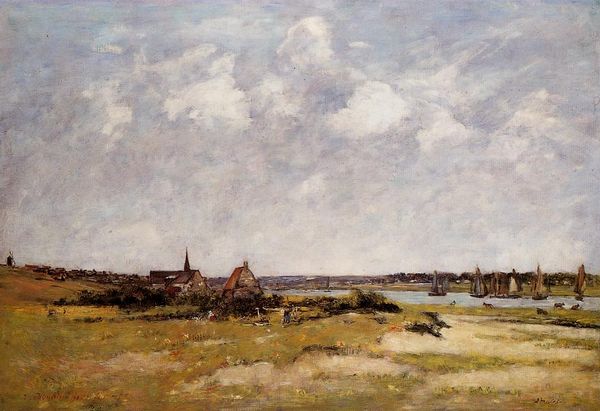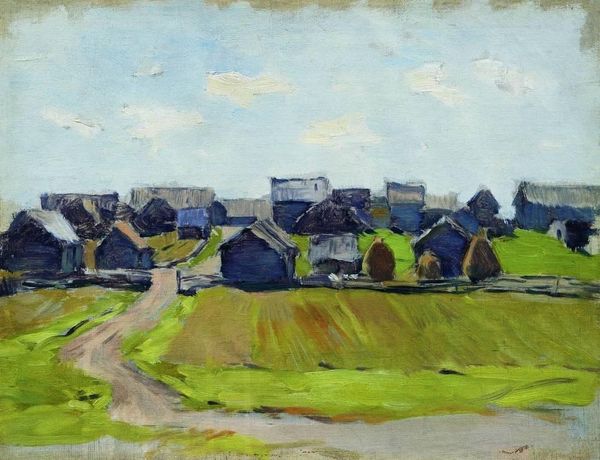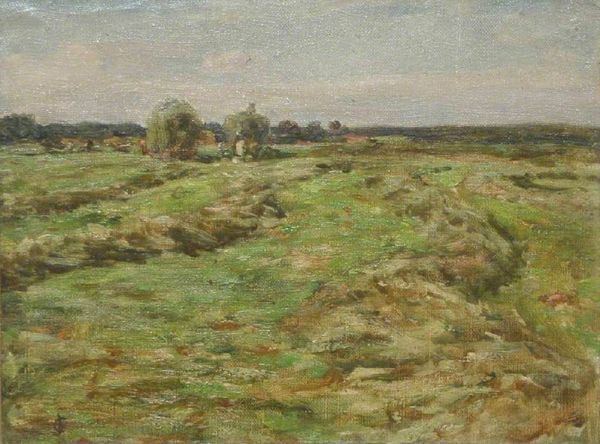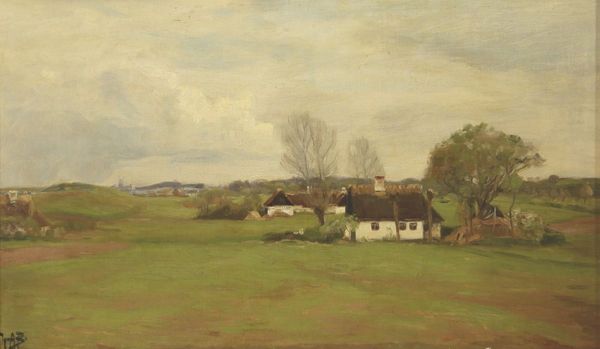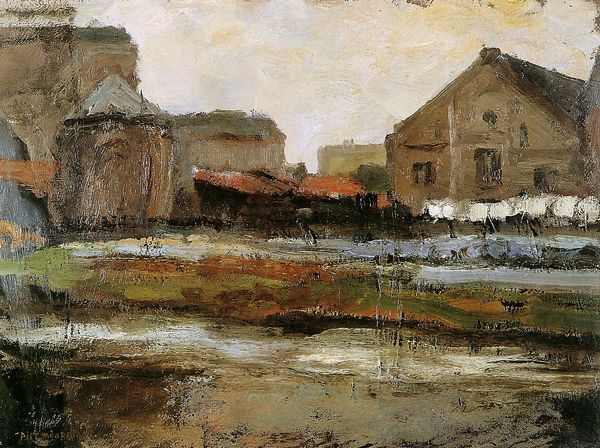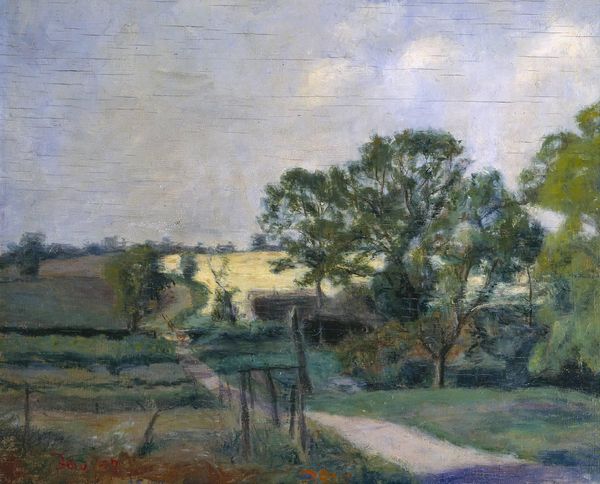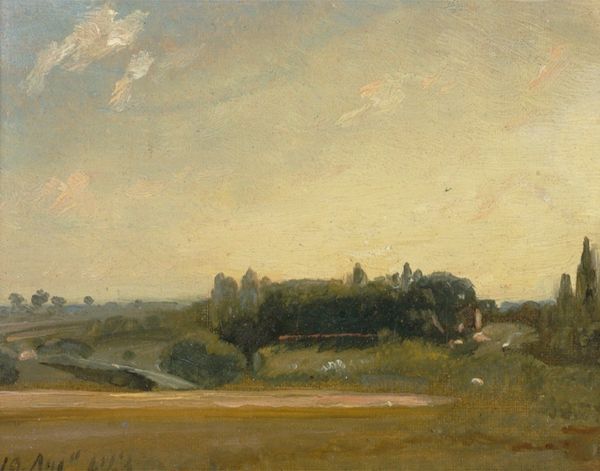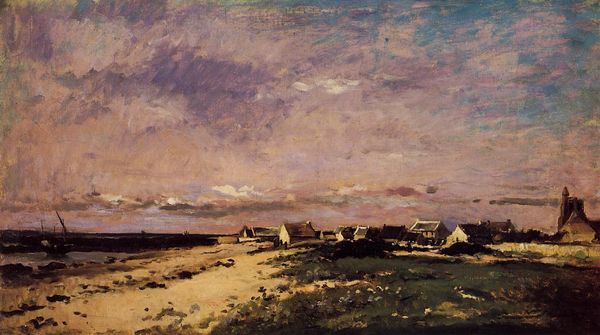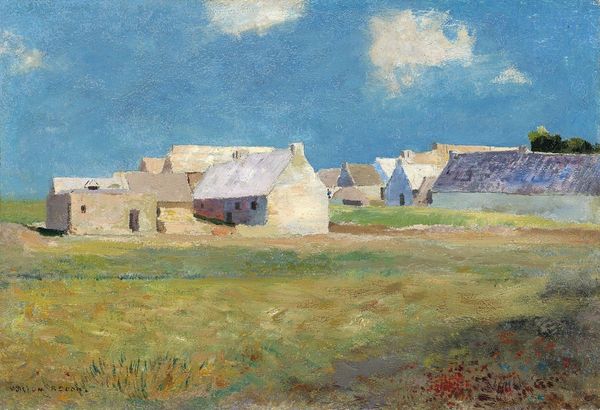
painting, oil-paint
#
painting
#
impressionism
#
oil-paint
#
landscape
#
cityscape
Dimensions: 72 x 47 cm
Copyright: Public domain
Editor: Here we have Berthe Morisot's "The Village of Maurecourt," painted in 1873, using oil paint. There's something about this landscape, the way it feels so loosely painted, that gives me a sense of tranquility, almost as if I'm there. How do you interpret this work? Curator: As an impressionist painting, it participates in a broader social trend of artists moving away from academic, studio-bound art and embracing plein air painting, engaging with modern life outside of the confines of traditional artistic establishments. Morisot, as a woman artist in the 19th century, faced particular challenges navigating the art world. Considering this, what does the choice of depicting this peaceful village landscape tell you? Editor: It's like she's choosing a subject matter that's readily accessible, domestic, safe almost. But I also see something more... almost a desire to observe without intrusion. Curator: Precisely. This ties into the contemporary concept of the "flâneur," typically a male observer of city life. Morisot's position as a woman complicates this. While male Impressionists depicted bustling urban scenes, Morisot often portrayed domestic settings or landscapes from a more removed perspective. Does that affect your view of the tranquil feeling you sensed? Editor: Definitely. There's a layer of social commentary there. It makes me think about the limitations placed on women and their engagement with public life during that era. Maybe the tranquility is intertwined with a quiet sense of restriction. Curator: Indeed, and Morisot, although from a wealthy background, wasn’t immune to those restrictions, and art offered one potential avenue for engaging with broader society and building visibility for herself and other women. The Impressionists, through their independent exhibitions and radical new style, also challenged the Salon system, opening pathways to visibility that were traditionally much harder for women to negotiate. Editor: That's a very interesting way to look at it. I hadn't considered the politics behind such a seemingly serene scene. Thank you. Curator: And thank you for pointing out the sense of tranquility in the scene, because it led us to this place!
Comments
No comments
Be the first to comment and join the conversation on the ultimate creative platform.

